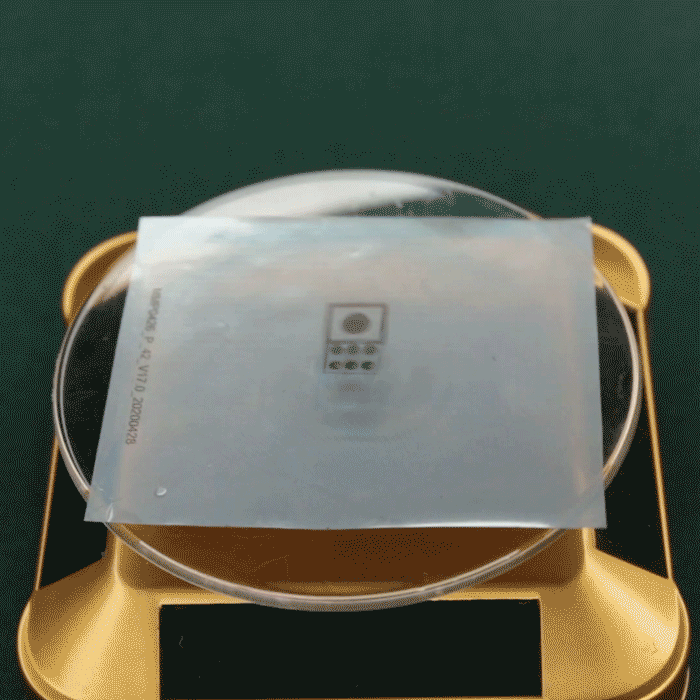Researchers have created a new ultra-thin film that can produce finely detailed 3D pictures that can be viewed in ordinary lighting without the use of special reading equipment.
 Researchers developed an ultra-thin film that can create a detailed 3D image that is viewable under normal illumination without any special reading devices. They demonstrated the new film by using it to create a 3D image of a cubic die that can be viewed from 360°. Image Credit: Su Shen, Soochow University in China.
Researchers developed an ultra-thin film that can create a detailed 3D image that is viewable under normal illumination without any special reading devices. They demonstrated the new film by using it to create a 3D image of a cubic die that can be viewed from 360°. Image Credit: Su Shen, Soochow University in China.
The graphics display seamless parallax and seem to hover above the film, making it possible to see them well from any angle. The novel glass-free method could be implemented into virtual or augmented reality gadgets or employed as a visual security element with further development.
Our ultra-thin, integrated reflective imaging film creates an image that can be viewed from a wide range of angles and appears to have physical depth. It can be easily laminated to any surface as a tag or sticker or integrated into a transparent substrate, making it suitable for use as a security feature on banknotes or identity cards.
Su Shen, Research Team Leader, Soochow University
The researchers disclosed their brand-new imaging film in Optics Letters, a journal of the Optica Publishing Group. The film is only about twice as thick as a regular plastic wrap at just 25 microns. It makes use of a technique called light-field imaging, which builds a 3D image by capturing the direction and strength of all light rays inside a scene.
Shen added, “Achieving glass-free 3D imaging with a large field of view, smooth parallax and a wide, focusable depth range under natural viewing conditions is one of the most exciting challenges in optics. Our approach offers an innovative way to achieve vivid 3D images that cause no viewing discomfort or fatigue, are easy to see with the naked eye and are aesthetically pleasing.”
High-Density Recording
A multitude of technological solutions have been looked at for producing the optimal 3D viewing experience. However, they frequently had issues such as restricted viewing angles or poor light efficiency.
The researchers created a reflective light-field imaging film and novel algorithm that enable both the location and angular information for the light field to be documented with high density in order to address these drawbacks.
The researchers also created a cost-effective self-releasing nanoimprinting lithography method that can use inexpensive materials and still achieve the accuracy required for great optical performance.
The film has an array of reflecting focusing devices on one side that behave much like miniature cameras, and a micropattern array encoding the picture to be displayed is present on the other side.
Shen further stated, “The powerful microfabrication approach we used allowed us to make a reflective focusing that was extremely compact—measuring just tens of microns. This lets the light radiance be densely collected, creating a realistic 3D effect.”
A Realistic 3D Image
The researchers used their novel film to generate a crisp 3D image of a cubic die that could be seen from practically any angle to illustrate it. Under the circumstances of natural lighting, the generated image has a resolution of 8 × 8 mm and an image depth that ranges from 0.1 to 8.0 mm.
A floating logo imaging film that can be utilized as a decorative element, such as on the back of a phone, has also been created and produced by the team.
By producing the nanopatterns, for instance, on a transparent display screen rather than a film, the researchers claim that their algorithm and nanopatterning process could find potential use in different applications.
By creating a double-sided nanoimprinting machine, which would make it simpler to obtain the exact alignment necessary between the micropatterns on either side of the film, they are also moving toward commercializing the production process.
Journal Reference:
Zhan, G., et al. (2022) Ultrathin, reflective light-field imaging film realized by self-releasing UV-curable nanoimprinting lithography. Optics Letters. doi:10.1364/OL.463117.